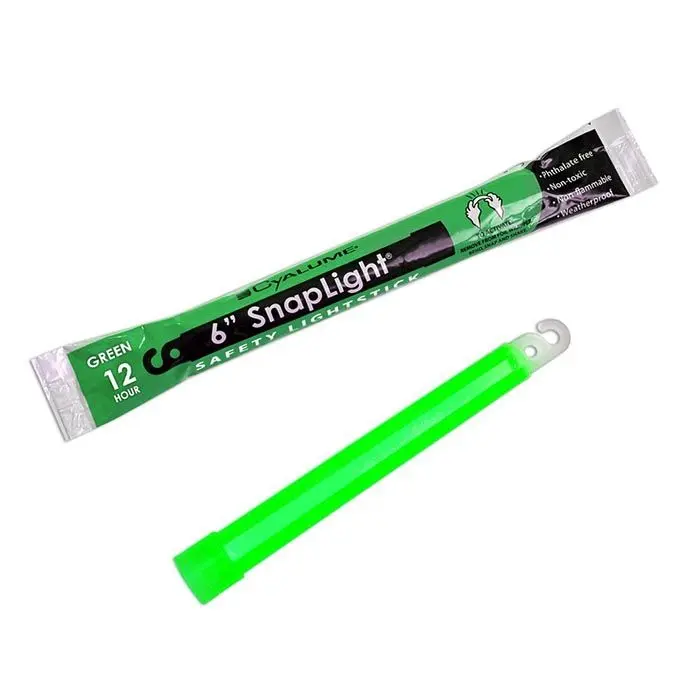Why Every First Responder's Kit Should Include a Chemstick
Importance of Chemsticks in First Responder Kits
Chemsticks are crucial in first responder kits because they provide a quick and portable way to test for chemical substances in emergency situations. Chemsticks can detect hazardous materials, including potential explosives or toxic substances, allowing first responders to assess the situation rapidly and take necessary precautions to ensure everyone’s safety. Chemsticks are easy to use, requiring no specialized training, and provide immediate results, making them a valuable tool for first responders in a variety of scenarios.
What is a Chemstick and How Does It Work?
A chemstick is a small, portable device used to quickly detect the presence of chemicals. It contains two separate chambers filled with different chemicals that react when combined. When you bend the chemstick, these chambers mix, producing a color change that indicates the presence of a specific chemical. This simple but effective tool is crucial for first responders to quickly identify hazardous substances in emergency situations.
Key Features and Benefits of Using Chemsticks
Chemsticks are an essential tool for first responders due to their portability and ease of use. They provide instant light without needing batteries or electricity. Chemsticks are waterproof, so they can be used in any weather condition. The light they emit is bright and can last for hours, making them reliable in emergency situations. Furthermore, chemsticks are non-toxic and safe to handle, making them suitable for all ages.
Chemsticks vs. Other Chemical Detection Methods
Chemsticks are handy for first responders as they provide a quick and simple way to detect chemicals. Compared to other methods, chemsticks are portable, easy to use, and do not require any additional equipment. They can swiftly identify hazardous substances, making them a valuable tool in emergency situations.
How to Use Chemsticks Safely and Effectively
Chemsticks are easy to use and provide a quick way to test for dangerous chemicals. To use them safely and effectively, follow these steps:
- Break the chemstick: Flex the stick until you hear a snap, which indicates the internal glass vial has broken.
- Shake it: Shake the chemstick to mix the chemicals inside.
- Wait for the color change: Allow a minute to pass for the chemicals to react and change color.
- Compare: Compare the color change with the provided chart to determine the presence of specific chemicals.
- Dispose: Safely dispose of the used chemstick according to local regulations.
By following these simple steps, you can use chemsticks in your first responder kit safely and effectively.
Best Practices for Storing Chemsticks in First Responder Kits
Chemsticks are highly sensitive to light and moisture, so it’s essential to store them in a cool, dark, and dry place. To ensure chemsticks are ready for use when needed, follow these best practices for storing them in first responder kits:
- Keep chemsticks in their original packaging to protect them from light exposure.
- Store chemsticks at room temperature to maintain their integrity.
- Avoid placing chemsticks near heat sources or direct sunlight.
- Periodically check the expiration date of chemsticks and replace any that have expired to ensure effectiveness in emergency situations.
Common Uses of Chemsticks in Emergency Situations
Chemsticks are versatile tools that every first responder should have in their kit. Here are some common uses of chemsticks in emergency situations:
- Identification: Chemsticks can be used for easy and quick identification in low-light or dark environments.
- Marking: They are helpful for marking paths, areas, or objects during search and rescue missions.
- Signaling: Chemsticks can be used to signal distress or communicate with other team members from a distance.
Having chemsticks in your kit can make a significant difference in how effectively you can respond to emergencies.
How Chemsticks Can Enhance First Responders’ Preparedness
Chemsticks are a crucial item to include in every first responder’s kit. These simple sticks can provide quick and reliable illumination in emergency situations, making them invaluable tools for enhancing first responders’ preparedness. When activated, chemsticks emit a bright light that can help responders see in the dark or signal for assistance. Their compact size and ease of use make them ideal for including in emergency kits.
Case Studies: Real-life Examples of Chemstick Utilization
Real-life case studies have shown the invaluable utility of chemsticks in various emergency situations. From quickly identifying hazardous chemicals to detecting chemical leaks, chemsticks have proved to be indispensable tools for first responders. In an emergency, the rapid and accurate information provided by chemsticks can make all the difference in ensuring safety and effectively managing the situation.
Conclusion: The Essential Role of Chemsticks in First Responder Readiness
Chemsticks are a crucial tool for first responders. They provide a quick and reliable way to detect chemical substances in emergency situations. Chemsticks can help identify dangerous chemicals, prevent accidents, and save lives. Ensuring that every first responder’s kit includes chemsticks is essential for their readiness and effectiveness in dealing with chemical-related incidents.






